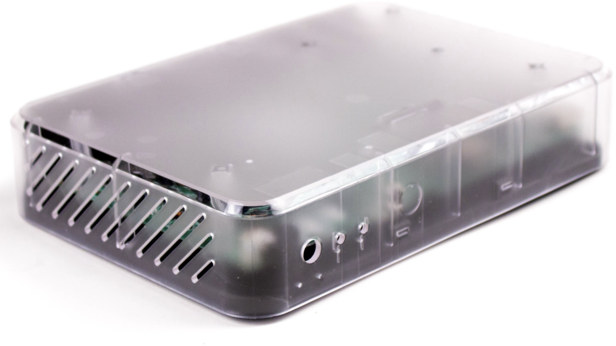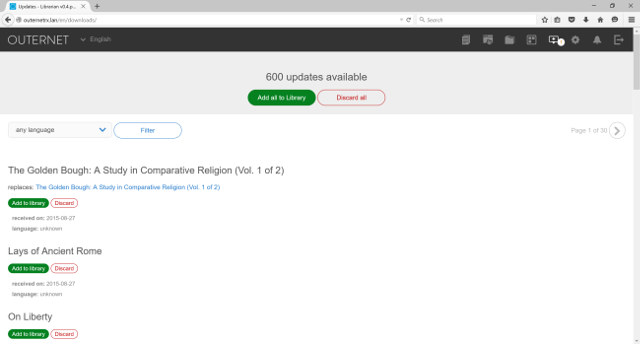While many of us take Internet access for granted, about 60% of the world population did not have access to Internet at the end of 2014, and Outernet initiative aims to provide educational, emergency, and news content to this segment of the population, which still represents the majority, at a rate of 1GB per day via a satellite receiver called Lighthouse.

Let’s check the hardware first:
- SoC – Amlogic AML8726-MX dual core Cortex A9 @ 1.5GHz with Mali-400MP GPU
- System Memory – 1GB DDR3
- Storage – 4 GB NAND flash + 1x micro SD slot
- Video Output – HDMI, AV (CVBS + R/L audio)
- Audio Output – HDMI, AV, and optical S/PDIF
- Connectivity – 10/100M Ethernet, 802.11 b/g/n Wi-Fi with up to 5 clients
- Tuner – DVB-S2 tuner with two antenna connectors (only one used)
- USB – 3x external USB 2.0 ports, 2x internal USB 2.0 ports (used)
- Misc – IR receiver, 3 LEDs for power, and status (special events and tuner), RS-232 port for serial console via 3.5mm jack.
- Power – 12V/1.5A
- Dimensions – 178 x 140 x 38 mm
If the specifications seem familiar, it’s because the hardware is based on WeTek Play satellite receiver, but instead of receiving video streams, it’s receiving scheduled data. The video output ports are not used, and you are supposed to use a computer or mobile device to configure the system and access data via a web interface using the right satellite for your region (See Outernet coverage map):
- North America – Galaxy 19, Eutelsat 113W
- Middle America – Galaxy 19, Eutelsat 113W
- South America – Eutelsat 113W
- Europe – HotBird 13E, Intelsat IS-20
- Africa – Intelsat IS-20
- Middle East – HotBird 13E, Intelsat IS-20, AsiaSat 5
- Asia (with Russia) – AsiaSat 5, ABS-2
- Oceania – AsiaSat 5

Since the 4GB internal storage will be filled quickly, you can also extend capacity with a USB flash drive or hard drive.
So what content is sent exactly?
- 30% is reserved for the core archive which is sent repetitively, although kept up to date, with textbooks, health guides, courseware, certain software
- 60% is updated weekly with content curated by the team and the public, including music, videos, courses, DIY projects, games, art. It has to be distributed under an open license (Creative Commons, MIT, GNU, Copyleft,…)
- 10% is for feeds such as Twitter, disaster alerts, news, crop prices, weather
Beside the hardware costs, data transfer is free, so it’s only a one time investment. Outernet has recently partnered with Khan Academy to stream their education content over satellite using Lighthouse.
Outernet Lighthouse currently sells for $99, but you can also opt to donate one for $89, and buy and donate Lighthouses for $169. I’ve also been told they plan to “drastically reducing the price in the coming weeks”. Since the firmware is available, you could also re-purpose your WeTek Play using these instructions. More details can be found on Outernet Lighthouse product page.

Jean-Luc started CNX Software in 2010 as a part-time endeavor, before quitting his job as a software engineering manager, and starting to write daily news, and reviews full time later in 2011.
Support CNX Software! Donate via cryptocurrencies, become a Patron on Patreon, or purchase goods on Amazon or Aliexpress




